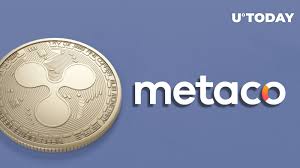The announcement that HSBC, one of the biggest banks in the world, is collaborating with Metaco, the Swiss digital asset custody company that Ripple acquired earlier this year, soon made a lot of the “XRP army,” the supporters of the U.S. fintech ledger protocol, happy.
Seen by ardent supporters as another indication that financial institutions will eventually adopt XRPL and, more importantly, the XRP token, the cryptocurrency is named after the tool created to move liquidity around the XRP Ledger used by Ripple. HSBC has selected a custody tech partner for the effort.
The cryptocurrency market is fiercely tribal. Holders of tokens want to think that their preferred blockchain will gain popularity and provide financial benefits, sometimes to the point where it defies reason. For example, according to the CEO of the Swiss custody company, Adrien Treccani, Metaco had been courting the bank for more than 18 months; the assumption that HSBC’s decision was prompted by Ripple’s recent acquisition misses this point. Nonetheless, Treccani notes that there is a loose relationship between Metaco’s banking customers and the Ripple protocols.
In an interview, Treccani stated, “There is an indirect link, which is that the adoption of Ripple and Metaco’s solutions further promotes the adoption of the XRPL as a protocol.” “The XRP Ledger benefits from every business success achieved by Ripple.”
For its part, Ripple has put a lot of effort into wooing banks, emphasising methods to lessen obstacles in areas such as international payments. According to Treccani, this makes XRPL one of the most established instances of a private tokenization blockchain.
“XRPL is intended for public and private usage and exhibits a significantly higher scalability than its competitors in the market, such as the Ethereum Virtual Machine chains,” he stated. “It permits on-chain trading with other blockchain-based exchanges or AMMs, and natively supports tokenized assets instead of requiring smart contracts.” Automated Market Makers (AMMs). This means that combining Metaco and Ripple provides a full vertical stack, which includes an infrastructure layer and a services layer, according to Treccani.
“We can provide a bank with the infrastructure, and also tokenization life cycle, payments primitives, and liquidity management all from a single vendor – with the proper segregation between that infrastructure and those value-added services,” he said.
All of this is well and good, but after Metaco was acquired, there were rumours and reports that some of its banking clients were uneasy and considering doing business with someone else. Perhaps because of Ripple’s disagreement with the Securities and Exchange Commission (SEC) of the United States.
Treccani stated that some of the rumours were “frankly a little bit crazy,” but that post-acquisition talks and client reevaluations are standard procedures and that many of the bank contracts contain change-of-control clauses.
“Yes, there have been such discussions and we have spent recent months clarifying the situation with the banks,” Treccani said. “I think we have been successful. Going forward, you are going to see more tier one bank partnerships that we will soon be announcing in Europe, the U.S., APAC and Africa.”
Tokenization is the process of managing the ownership and transfer of physical assets on blockchains, and HSBC is following suit like many other large banks. This process calls for reliable digital asset custody technology.
But Treccani is very clear that his motivation is the libertarian spirit of cryptocurrency. He expressed his belief that numerous banks will eventually wish to provide services related to cryptocurrencies, and if they prepare now for tokenization, these establishments will have all the requirements for entering the cryptocurrency space when the time comes. “If it was just for tokenization, I would not be in this game,” he said.


